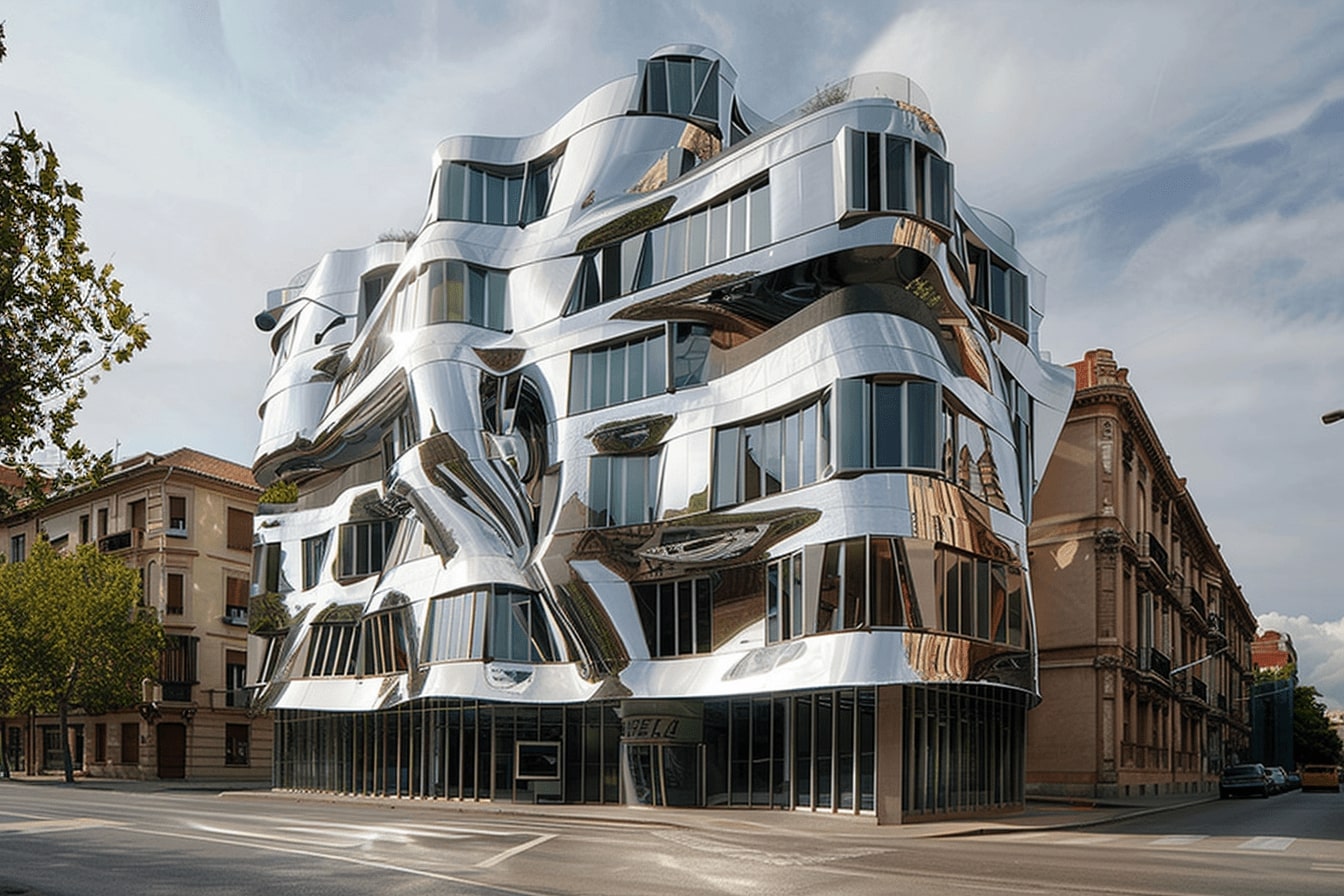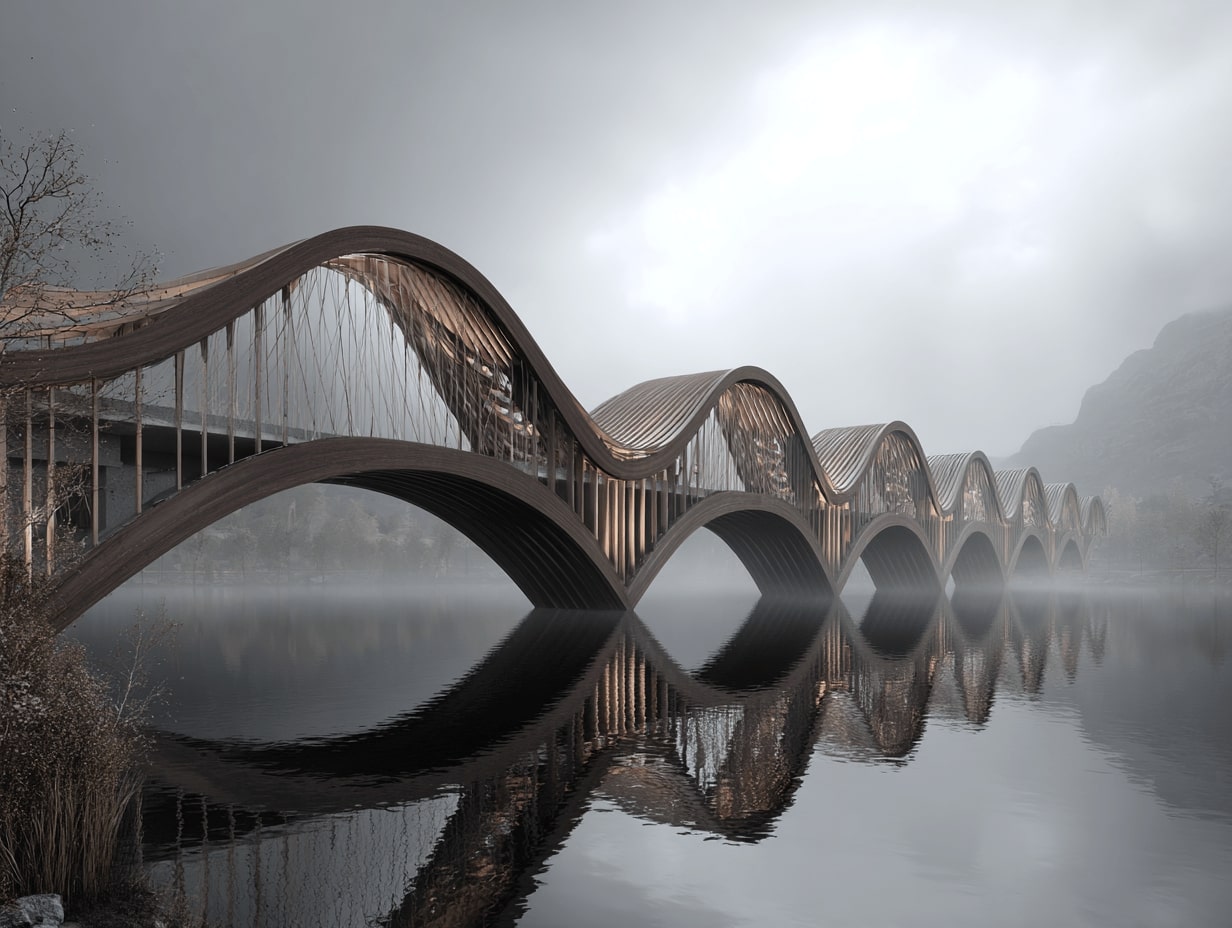- Home
- Articles
- Architectural Portfolio
- Architectral Presentation
- Inspirational Stories
- Architecture News
- Visualization
- BIM Industry
- Facade Design
- Parametric Design
- Career
- Landscape Architecture
- Construction
- Artificial Intelligence
- Sketching
- Design Softwares
- Diagrams
- Writing
- Architectural Tips
- Sustainability
- Courses
- Concept
- Technology
- History & Heritage
- Future of Architecture
- Guides & How-To
- Art & Culture
- Projects
- Interior Design
- Competitions
- Jobs
- Store
- Tools
- More
- Home
- Articles
- Architectural Portfolio
- Architectral Presentation
- Inspirational Stories
- Architecture News
- Visualization
- BIM Industry
- Facade Design
- Parametric Design
- Career
- Landscape Architecture
- Construction
- Artificial Intelligence
- Sketching
- Design Softwares
- Diagrams
- Writing
- Architectural Tips
- Sustainability
- Courses
- Concept
- Technology
- History & Heritage
- Future of Architecture
- Guides & How-To
- Art & Culture
- Projects
- Interior Design
- Competitions
- Jobs
- Store
- Tools
- More
Introduction to Parametric Architecture: Tools, Examples, and Future Trends

In the evolving world of architecture, parametric design stands out as a game-changer. By leveraging algorithms and data-driven processes, architects can create complex, adaptive structures that were once unimaginable. This approach not only enhances creativity but also optimizes functionality and sustainability.
Parametric architecture isn’t just a trend; it’s a response to the growing need for efficiency and innovation in design. With tools that allow for real-time adjustments and simulations, we can explore countless design possibilities and make informed decisions. This method has already revolutionized urban planning, interior design, and even furniture creation, showcasing its versatility and impact.
As we delve into the fundamentals of parametric architecture, we’ll uncover how this powerful tool is reshaping the built environment. From its historical roots to its modern applications, understanding parametric design opens up new horizons in architectural creativity and efficiency.

Table of Contents
ToggleUnderstanding Parametric Architecture
Defining Parametric Architecture
Parametric architecture uses algorithms and mathematical equations to craft adaptable designs. These designs respond to changing conditions, ensuring that every element is interconnected. When we alter one part of the design, all other elements adapt accordingly. This methodology rejects homogeneity, blending complexity and variety instead. Through this approach, we can create unique, sustainable structures that meet diverse needs and constraints. The principle revolves around precision, enabling real-time adjustments and simulations to explore extensive design possibilities.
Historical Evolution and Early Examples
Parametric architecture has roots in the innovative works of architects like Frei Otto, who utilized physical processes as design engines instead of traditional drawing methods. His experiments with catenary arches and tension-based structures laid the groundwork for contemporary parametricism. Antoni Gaudí also contributed by manipulating physical models to optimize structural efficiency, paving the way for algorithm-driven design.
As we transitioned to the digital age, tools like AI and advanced computational software enabled architects to refine and iterate complex designs more efficiently. This evolution highlights a significant departure from the rectilinear forms of the past to more fluid, dynamic structures. Parametricism, a term coined by Patrik Schumacher, defines this shift as a self-referential system where principles across architecture, fashion, and urbanism converge, enriching our built environment.
Principles of Parametric Design
The Role of Mathematics and Algorithms
Parametric design fundamentally relies on mathematics and algorithms. It leverages mathematical equations to establish relationships between various design elements. These elements include dimensions, structural components, and material properties. By defining these relationships as parameters, changes in one aspect automatically update related elements, ensuring consistency across the design.
Algorithms play a crucial role in generating complex geometries. For example, designers can create a basic geometric shape and then use algorithms to modify its parameters, producing intricate and unique forms. Parametric software enables us to insert, adjust, and refine these parameters, accommodating various user requirements and environmental constraints simultaneously. This interconnected approach allows us to explore multiple design iterations without starting from scratch, enhancing efficiency and creativity in the design process.
From Concept to Construction: The Workflow
The transition from concept to construction in parametric design involves several streamlined steps. Initially, designers input parameters such as material types, dimensions, and user data into parametric software. This software generates a digital model, incorporating all specified parameters. The model evolves through continuous parameter adjustments, reflecting real-time changes in its form and structure.
Once the digital model is refined, it’s translated into detailed construction documents. These documents guide the fabrication and assembly processes, ensuring that the initial design vision is accurately realized. For example, changes in user requirements or material specifications are automatically reflected in updated construction documents, minimizing errors and inefficiencies.
In essence, the parametric workflow bridges the gap between design and construction. By maintaining a dynamic model that responds to parameter changes, we can achieve optimized and highly customized architectural solutions, tailored to specific project needs and constraints.

Applications and Examples
Landmark Buildings Influenced by Parametric Design
The influence of parametric design on landmark buildings has been significant, showcasing the potential of this innovative approach. A prime example is the Peix Olimpic by Frank Gehry in Barcelona. This iconic structure, inspired by organic shapes, demonstrates how parametric software can translate natural forms into architectural marvels. The Tokyo Skytree, standing at 634 meters tall, is another testament to parametric design. Designed by Nikken Sekkei, this tower’s slender, tapering form minimizes wind resistance and maximizes space utilization. Its parametric design allowed precise calculations and manipulations of angles and dimensions.
The Heydar Aliyev Center in Baku, designed by Zaha Hadid, exemplifies fluidity and movement through its flowing curved lines. This was achieved by creating a 3D digital model refined iteratively to optimize structural performance. The distinctive double cone structure, supported by a steel space frame, highlights the functional and aesthetic benefits of parametric design. Each of these buildings not only stands out for its visual appeal but also for its optimized structural efficiency and functionality.
The Impact of Parametric Design in Urban Planning
Parametric design has a profound impact on urban planning, enabling the development of more efficient and adaptive cityscapes. By utilizing algorithms and data-driven processes, urban planners can simulate various scenarios and assess the implications of different design choices. This approach facilitates the creation of optimized layouts that consider factors such as traffic flow, sunlight exposure, and environmental impact. One key benefit is the ability to generate numerous design iterations quickly, allowing planners to select the most effective and sustainable solutions.
For instance, the design of public spaces can be tailored to enhance social interactions while maintaining environmental balance. Residential areas can be planned to optimize land use and improve living conditions. Parametric design allows for the integration of green spaces and the intelligent arrangement of infrastructure. By leveraging these capabilities, urban planners can create cities that are not only visually appealing but also highly functional and sustainable, catering to the needs of present and future generations.

Tools and Software for Parametric Design
Key Software Solutions
Parametric design relies heavily on specialized software to create and manage complex design relationships. Key software solutions include:
- Marionette: Integrated into Vectorworks, Marionette enables designers to create custom application algorithms using nodes linked in a flowchart arrangement. This tool, built in Python, facilitates the creation of interactive parametric objects, streamlining workflows.
- Modelur: Modelur is a plugin for Trimble SketchUp that aids in conceptual urban massing. It allows users to define buildings with parameters like the number of stories and gross floor area, calculating urban control parameters such as floor area ratio in real-time.
- Power Surfacing: This SolidWorks application excels in freeform organic surface and solids modeling, ideal for industrial design. It also supports reverse engineering for precise model adjustments.
- Rhino with Grasshopper: Rhino’s Grasshopper plugin provides a robust environment for algorithmic modeling. It allows users to create complex geometries through a visual programming interface, enhancing design flexibility and precision.
- Dynamo: Integrated with Autodesk Revit, Dynamo offers a visual scripting environment for automating building information modeling (BIM) tasks. It supports iterative design exploration and efficient manipulation of BIM data.
Advantages of Using Specialized Tools
Utilizing specialized tools for parametric design offers several advantages:
- Enhanced Precision: Parametric tools ensure high accuracy in design adjustments. For instance, Marionette’s node-based scripting allows precise control over parametric objects.
- Design Iteration: Tools like Grasshopper facilitate rapid exploration of multiple design variants. Designers can adjust parameters and immediately see the impact on the design, optimizing both aesthetics and performance.
- Workflow Efficiency: Specialized software streamlines workflows by automating repetitive tasks. Modelur’s real-time calculations of urban control parameters reduce the time needed for manual updates, enabling faster decision-making.
- Collaboration and Integration: Many parametric tools are built to integrate seamlessly with other design software. For example, Dynamo’s integration with Revit enhances BIM workflows, allowing for improved coordination among project stakeholders.
- Creativity and Innovation: Tools like Power Surfacing support the creation of innovative, organic shapes that would be challenging to model with traditional methods. This fosters creativity and enables designers to push the boundaries of what’s possible.
These tools and their advantages underline the transformative potential of parametric design in architecture, making it indispensable for modern design practices.

Future Prospects and Challenges
Innovations on the Horizon
Parametric architecture continues to evolve rapidly, with innovations that promise to transform the industry further. Generative design, which uses algorithms to generate a wide range of design options, can streamline the creative process. Artificial Intelligence (AI) integration offers new ways to optimize designs for efficiency, sustainability, and cost-effectiveness. 3D printing technologies are enabling more complex and customized building components, reducing waste and speeding up construction. As these technologies mature, we expect more adaptive and intelligent structures to become the norm.
Addressing Criticism and Ethical Considerations
Despite its many advantages, parametric architecture faces criticism and ethical concerns. Critics argue that excessive reliance on algorithms can lead to homogeneous designs, lacking in cultural and contextual relevance. To address these issues, it’s essential to incorporate local materials and traditional building practices into parametric designs. Ethical considerations also arise regarding data privacy and algorithmic transparency. Ensuring that design algorithms are transparent and inclusive will be crucial for gaining public trust and achieving broader societal acceptance.
By staying ahead of these innovations and addressing criticisms constructively, we can maximize the potential of parametric architecture while honoring ethical and cultural values.
Conclusion
In summation, our discussion on parametric architecture underscores its pivotal role in shaping modern design. From its initial instances with the Peix Olimpic to the impressive feats seen in the Heydar Aliyev Center, parametric design has demonstrated remarkable potential in achieving structural efficiency and aesthetic brilliance.
We see the utility of advanced tools such as Rhino with Grasshopper, Dynamo, Marionette, Modelur, and Power Surfacing in facilitating the precise modeling of complex forms. These software solutions allow architects to push the boundaries of creativity while maintaining practical considerations in structural integrity.
Future prospects for parametric architecture are promising. Generative design, AI integration, and 3D printing stand at the forefront of upcoming innovations. These technologies promise to further revolutionize the industry, enabling even more sophisticated and efficient designs. However, as we advance, ethical considerations must remain a priority. Ensuring algorithmic transparency, utilizing local materials, and respecting traditional practices are essential to sustain public trust and cultural relevance.
By embracing both technological advancements and ethical practices, the true potential of parametric architecture can be unlocked. It’s evident that the fusion of algorithmic precision and human ingenuity will continue to redefine architectural boundaries, setting new standards for our built environments.
- Architecture Design Trends
- Examples of Parametric Architecture
- Future of Parametric Design
- Introduction to Parametric Architecture
- Parametric Architecture
- Parametric Architecture Trends
- Parametric Design Examples
- Parametric Design Tools
- Parametric Modelling Techniques
- Parametric Structures
- Software for Parametric Design
A licensed architect with hands-on studio experience, I translate complex design ideas into clear, engaging stories for a global audience. As a seasoned content writer and editor, I craft articles, project features, and thought-leadership pieces that illuminate emerging technologies, sustainable practices, and cutting-edge design trends—always with an architect’s eye for detail, accuracy, and narrative flow. My goal is to bridge practice and publication, giving fellow professionals and curious readers alike the insight and inspiration they need to push architectural boundaries.
Submit your architectural projects
Follow these steps for submission your project. Submission FormLatest Posts
Top 10 Examples of Parametric Architecture Around the World
Parametric architecture is reshaping global design through computational tools that generate fluid...
10 Notable Architects Who Excel in Parametric Design
Discover 10 leading architects who excel in parametric design, showcasing how computation,...
Parametric Design in Bridge Architecture: From Idea to Ribbon-Cut
Parametric design in bridge architecture: how data, rules, and optimization speed iterations,...
8 Principles of Parametric Architecture You Should Know
Parametric architecture merges computational logic with creative exploration, allowing designers to generate...












Leave a comment